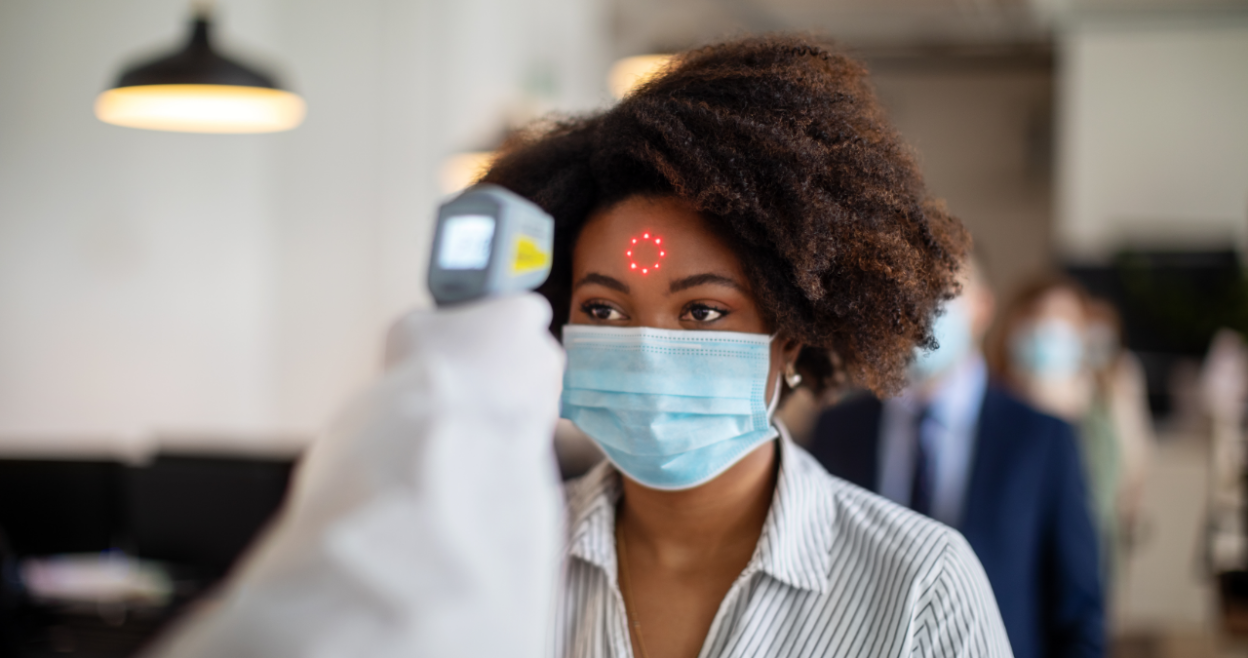Hospitals and healthcare systems across the world stepped up as heroes to support their communities through the COVID-19 pandemic.
Hospital workers acted fast to save lives and control the outbreak. Health system leaders deployed rapid response and business continuity plans. Practitioners implemented non-contact methods of patient care during shelter-in-place orders. Radiologists and other hospital personnel transitioned to working at home, enabling first-responders with the support and information they needed in real-time.
Three threads tie all these efforts together: humanitarian commitment, agile mindsets and digital innovation.
Case Study: American Hospital Dubai
When the pandemic reached the United Arab Emirates, American Hospital Dubai had to rapidly switch to three key priorities:
- Transform a hotel into an operational, 390-bed field hospital for COVID-19 patients, including secure access to the main hospital IT services.
- Strengthen remote-working capabilities for the hospital’s administrative employees, which included call center, finance and HR functions among other areas.
- Launch a new telehealth service—months earlier than planned—to ensure patients can still access medical experts and treatments. This was vital to patients and hospital operations.
“Agility has been key. You can’t always think in a structured manner. You’ve got to take risks to achieve the goal, even though it may not be perfect. You must really support the business. At times like this, you can’t say ‘no.’ You’ve got to figure something out. Even if it’s just 50 percent of what’s been requested, it’s better than saying no. That’s worked out well for us.”
AHMAD YAHYA, CIO, AMERICAN HOSPITAL DUBAI
Using Technology to Track a Health Crisis
Digital health technology can facilitate pandemic strategy and response in ways that are difficult to achieve manually. Countries, such as South Korea, integrated digital technology into government-coordinated containment and mitigation processes, including:
- Surveillance
- Testing
- Contact tracing
- Strict quarantine
These capabilities could help with the early flattening of their incidence curves.
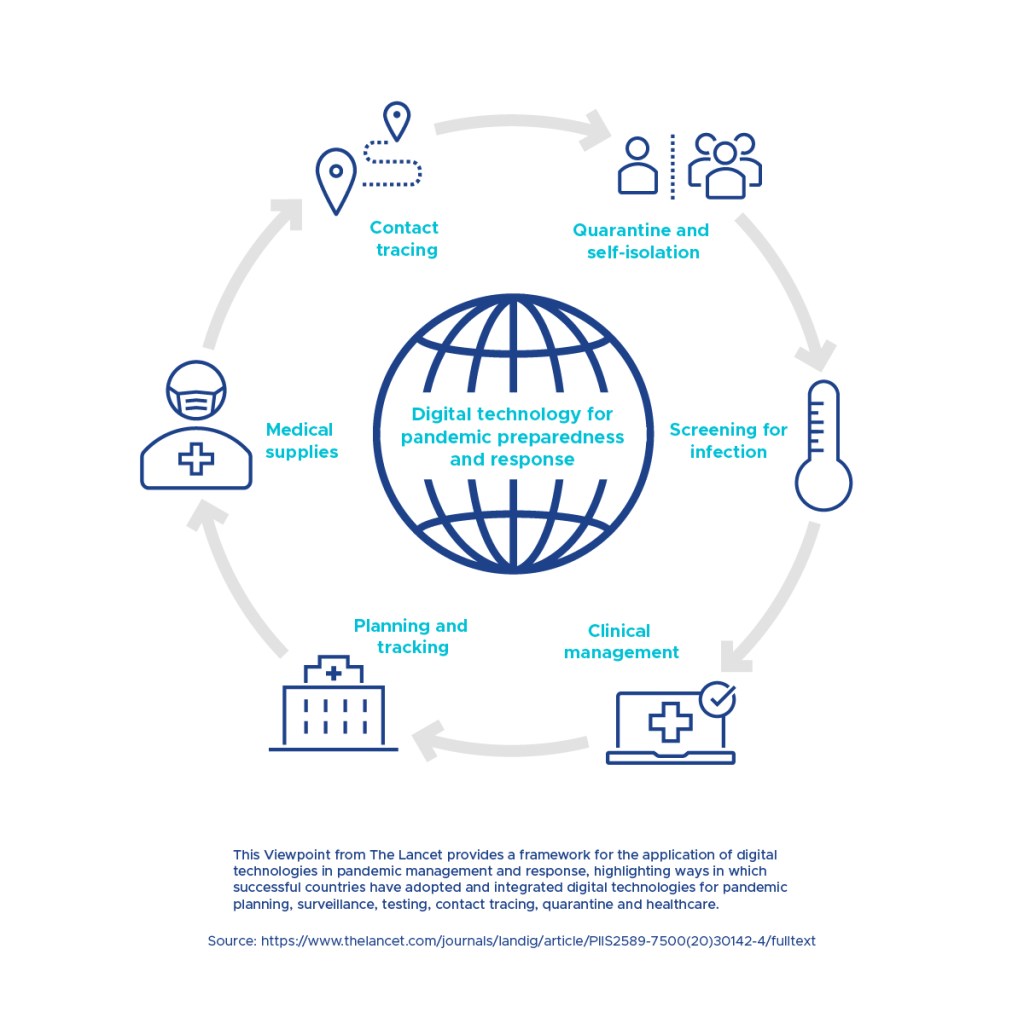
The need to track COVID-19 transmission fueled global digital innovation.
- South Korea implemented tools for aggressive contact tracing, using security camera footage, facial recognition technology, bank card records, and global positioning system (GPS) data from vehicles and mobile phones to provide real-time data and detailed timelines of people’s travel. By identifying and isolating infections early, South Korea maintained among the lowest per-capita mortality rates in the world.
- Singapore launched a mobile phone application that exchanges short-distance Bluetooth signals when individuals are in proximity to each other. The application records these encounters and stores them in their respective mobile phones for 21 days. If an individual is diagnosed with COVID-19, Singapore’s Ministry of Health accesses the data to identify contacts of the infected person.
- Germany launched a smartwatch application that collects pulse, temperature and sleep data to screen for signs of the viral illness. An online, interactive map enables authorities to assess the likelihood of COVID-19 incidents across the nation.
Transforming the Patient Experience
One thing is clear: Patients want greater personalization in their care. During the pandemic, this is more true than ever.
Patients are looking for the same easy, remote and intuitive access to healthcare that they get from their shopping and banking experiences. This “consumerization” of healthcare drives hospitals, clinics and physician practices to find new ways to build processes and procedures around patient needs rather than traditional healthcare delivery methods.
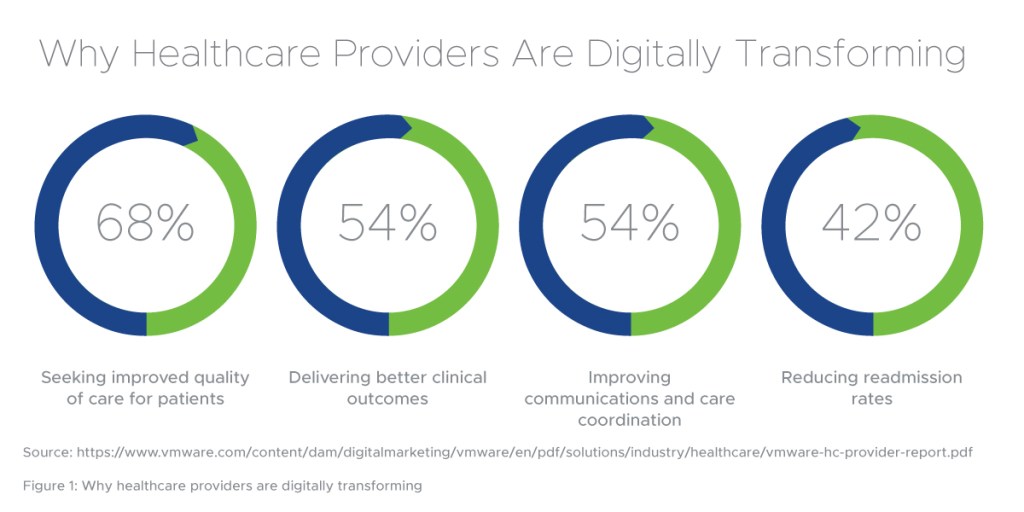
Case Study: Braunschweig Municipal Hospital
“A hospital CIO must always remember that the primary job of the hospital is to improve the health of a patient,” says Norman Lüttgerding, CIO of Braunschweig Municipal Hospital. “Any changes the IT team makes to processes must benefit the clinician and the patient. That means we need to really understand what our clinicians do and ensure we enable them—not hinder them. This is what I mean by less technology and more humanity.”
Digital Clinical Workspace Innovations
In a time when the very safety of patients and hospital staff depends on social distancing, digital technologies are vital. One of the major trends in healthcare technology is the “digital clinical workspace.”
Digital clinical workspaces provide secure, simple access to patient information on the right device for the right task at the right time. The technology helps unify user, desktop and mobile access management for higher productivity and lower operational costs. It also helps clinicians improve healthcare outcomes across the care continuum, helping them focus on the patient—not the technology.
Case Study: Gloucestershire Hospitals NHS Foundation Trust
Like others in the healthcare space, Gloucestershire wants to accelerate its digital transformation. The proliferation of mobile devices, Wi-Fi-enabled medical equipment and seamless connectivity across multiple sites has the power to completely transform the way the trust delivers care.
This is not digital transformation for transformation’s sake. There are three business objectives to the program. Gloucestershire wants to improve business continuity, provide services to other healthcare providers in the region and make it faster to deploy or scale-up new digital services. Digital transformation will create a more connected, robust and dynamic healthcare environment. Now, these goals have accelerated due to rapid changes in global health needs as a result of the COVID-19 pandemic.
From an infrastructure perspective, our focus is on building a modern infrastructure with consistent operations. Our old infrastructure was not highly available. It wasn’t really safe enough for us to deliver digital services.
TIM MULLAN, IT TRANSFORMATION PROGRAM LEAD, GLOUCESTERSHIRE HOSPITALS NHS FOUNDATION TRUST
Telemedicine: Where Health & Digital Technology Meet Face to Face

Changes are needed to reduce staff exposure to ill patients, preserve personal protective equipment (PPE) and minimize the impact of patient surges on facilities. Internet connectivity and mobile devices make home-based services like tele-pharmacy and telemedicine a reality. These are great options if patients feel too sick to leave their homes, worry about contracting COVID-19 or simply want a second opinion.
Remote access to healthcare services may increase participation for those who are medically or socially vulnerable or do not have ready access to providers. Recent policy changes reduced barriers to telehealth access and promoted the use of telehealth to deliver acute, chronic, primary and specialty care.
Five benefits and potential uses of telehealth:
- Provide low-risk urgent care for non-COVID-19 conditions, identify those persons who may need additional medical consultation or assessment, and refer as appropriate.
- Remote patient monitoring, allowing direct transmission of a patient’s clinical measurements from a distance (may or may not be in real time) to their healthcare provider.
- “Store and forward” technology, where messages, images or data are collected at one point in time and interpreted or responded to later. Patient portals can facilitate this type of communication between provider and patient through secure messaging.
- Engage in case management for patients who have difficulty accessing care (e.g., those who live in very rural settings, older adults, those with limited mobility).
- Provide non-emergent care to residents in long-term care facilities.
5G & the Internet of Medical Things
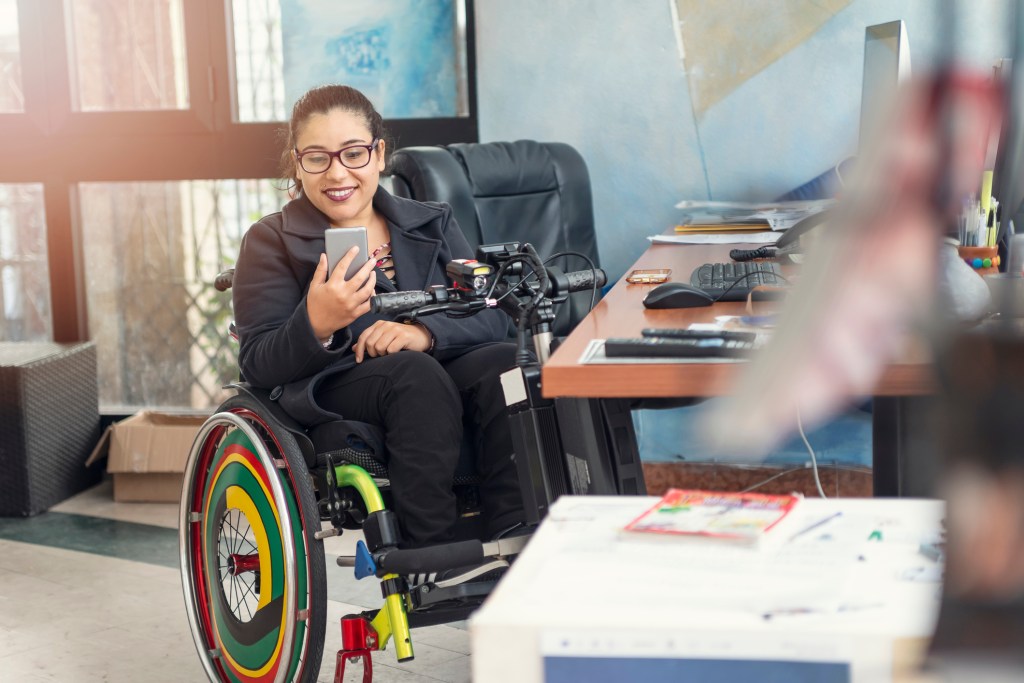
IoMT is transforming healthcare operations. And 5G innovations promise to amplify those transformative capabilities across the world.
Data from “medical things,” such as detectors on diagnostic devices or implants in patients’ bodies, can be sent to centralized databases for healthcare professionals to analyze in real-time. With IoMT, healthcare providers can also collect data from wearables and broad—even global—networks of interconnected medical devices and equipment. The combination of 5G and IoMT innovations will enable better care to be delivered faster and at less cost, a benefit to both patients and providers, particularly during the global pandemic.
“Today, our healthcare system is facing a monumental challenge in COVID-19,” Mike Katz, executive vice president, T-Mobile for Business, says in a CNBC article. “Patients are pouring into hospitals in need of fast triage, testing and care. At the same time, medical professionals need ways to minimize exposure to non-infected people, including themselves. But imagine a future where technologies like AR and VR can be used to speed or even automate, diagnose and consult patients on the next steps through telehealth platforms. The sooner we can integrate that into our healthcare system with reliable network access, the better off patients and medical professionals can be.”
IoMT use cases:
- Chronic disease management
- Support for differently abled people
- Proactive health alerts
- Remote patient monitoring
- Patient engagement
- Drug management
- Remote diagnostics
Security & Privacy Concerns
The emergence of coronavirus has tripled healthcare companies’ security risk.
VMWARE CARBON BLACK CYBERSECURITY THREAT SURVEY
While telehealth and other digital healthcare technology are not new, widespread adoption was relatively slow—until the pandemic. However, like so many other technology use cases, there are privacy and security concerns. In fact, the healthcare industry is one of the most highly regulated when it comes to protecting patient privacy and security. And for good reason: the healthcare industry is one of the top targets for cybercrime.
“There really are many different vectors through which bad actors can infiltrate hospital systems. There is the potential for brute force hacking into the hospital’s network, accessing IoT devices such as security cameras, medical devices like X-ray machines and many others. But the biggest vulnerability point is end users who are not attentive,” says Richard Temple, CISO at Deborah Heart and Lung Center, in Forbes Insights’ The Healthcare Industry Seeks Cybersecurity Remedies report.
Governmental bodies across the world are focused on ensuring citizen privacy and security, particularly regarding healthcare-related use. As digital innovation becomes more ingrained in patient care, both private and public organizations are collaborating during the pandemic to protect patient rights.
Technology companies are collaborating with partners to shore up healthcare IT infrastructure in support of digital services.
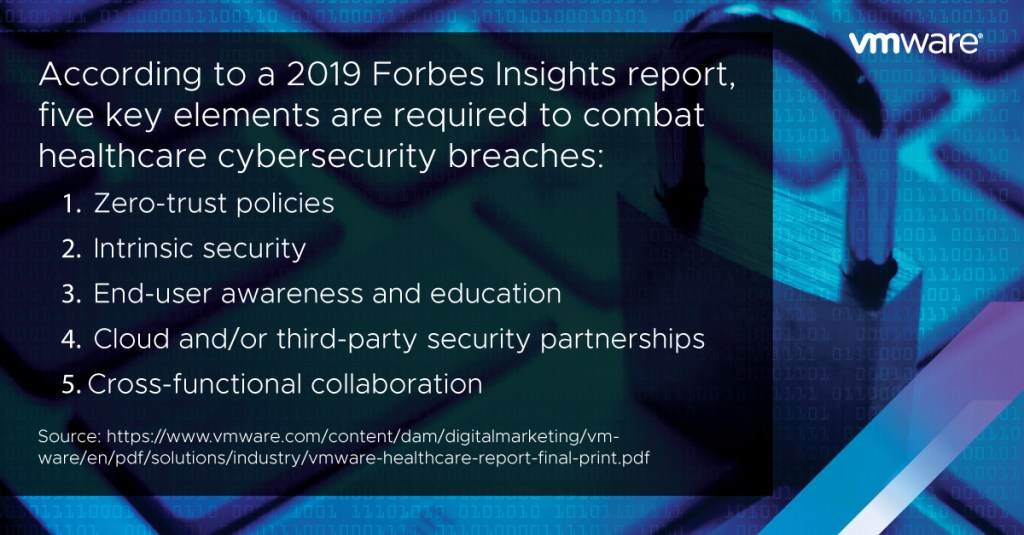
Thinking Outside the Hospital
This is very true for healthcare workers, as well, particularly those not on the front lines.
In the wake of COVID-19, medical professionals are using new technology to access apps in a virtual environment. For Nebraska Medical Center, all employees who did not need to go into the hospital worked from home. To stay productive remotely, they accessed required apps and resources via a digital workspace.
“The investment we made in our digital workspace strategy is certainly helping us maintain continuity and deliver better care in these extraordinary times,” says Brian Lancaster, vice president of information technology, Nebraska Medicine.
Now that employees, teachers and students work from home, Lancaster says he sees long-term implications that it will continue long after the coronavirus pandemic ends.
“I think people will enjoy the benefits of remote work,” he says. “I don’t think we go back to where we were. I think we have an opportunity to access our physical offices in new ways and that it gives us new ways to do work, learn and provide patient care.”
Case Study: Guangzhou Overseas Chinese Hospital
In the Asia-Pacific and Japan (APJ) region, many organizations shifted mindsets to think about business continuity plans and remote work best practices and capabilities. The Guangzhou Overseas Chinese Hospital protected non-front line staff by setting up its 300-member medical imaging team for remote work. By making all X-ray, CT and MRI images available on a virtual desktop, 300 doctors can now access this vital service at any hour from any location. This means that productivity during this crucial time is uninterrupted.
At a time when business is far from usual, companies are leaning on our digital workspace solutions to enable their employees to work remotely, maintain productivity, increase connectivity and provide more secure access to applications regardless of the endpoint.
HANKAR IYER, SENIOR VICE PRESIDENT, AND GENERAL MANAGER, VMWARE END-USER COMPUTING
The Future of Digital Healthcare
Predicting what lies ahead is difficult, yet one thing is certain: Health systems are radically changing in the face of the global crisis.
Countries worldwide are attempting to provide the best healthcare to all, while rationing resources to ensure it’s there when the vulnerable need it most.
As the tech industry does everything it can to help fight the pandemic, we will continue to see developments that are not only beneficial to help us fight this crisis, but also prepare us for the next.

